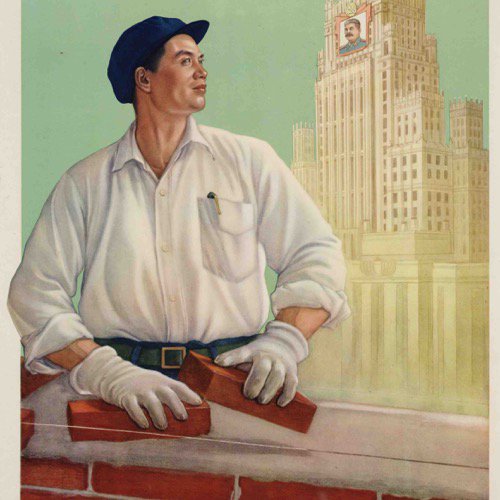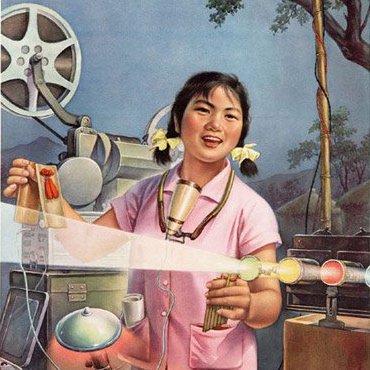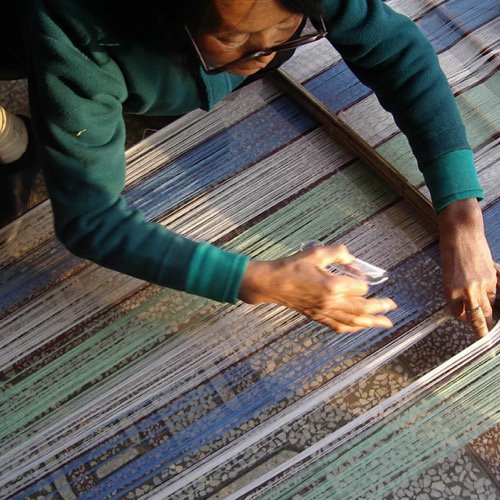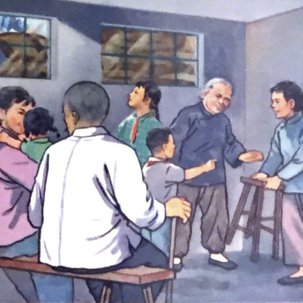Marc Andre Matten, Friedrich-Alexander University Erlangen-Nuremberg, Germany
Summary
As objects impacting both daily life and economic well-being of the rural population, agricultural tools were a central concern to farmers since the imperial era. During both the Mao era and the Reform era their technological improvement stood high on the political agenda. Orienting themselves to foreign models and native innovations these tools were expected to contribute to economic growth by raising agricultural productivity. This biography introduces a number of agricultural tools used during the Mao era that were shaped by social and political forces on both the central and the local level.Introduction
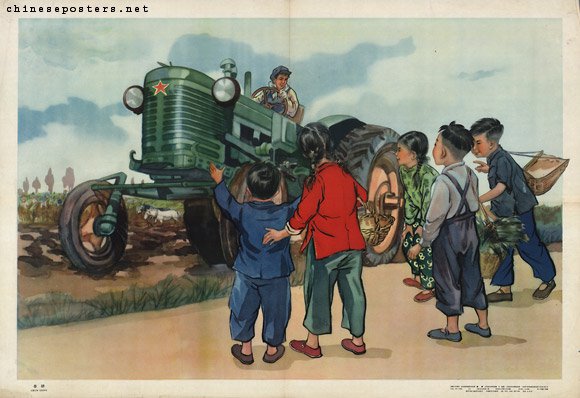
When the People’s Republic of China was founded on 1 October 1949, the Chinese Communist Party (CCP) saw as one of its first duties to improve the living conditions of the Chinese people after a long period of war and civil war (1931-49). In the countryside, this political agenda pushed land reform and led to large state investments in the modernization of agriculture. During the early 1950s, in the course of collectivization, the CCP imitated the model of the Soviet Union when it called for the replacement of traditional agricultural tools with advanced machinery. The urgent need to mechanize the means of production became an important hallmark of science and technology propaganda in the countryside, especially during the Great Leap Forward (dayuejin 大跃进, 1958-61) when the regime declared to surpass Great Britain in economic production within fifteen years. Accordingly, agricultural research institutes and publishing houses engaged feverishly in disseminating information on advanced tools in handbooks and manuals. In terms of media, the regime deemed visual materials—ranging from graphics and blueprints to photos and propaganda posters—to be most effective in its mass campaign to popularize science. The intention was not only to implement technological innovation at the local level, but much more to create a wide-spread optimism that the Communist Party was able to achieve tremendous progress in a short period of time. [See ⧉ source: 1962 'Spring plowing' poster, also depicted to the left]
Importing Foreign Agricultural Machinery
Following the political slogan 'The Soviet Union of today is our tomorrow' (Sulian de jintian shi women de mingtian 苏联的今天是我们的明天) [see ⧉source: 'The Soviet Union is our model' poster] the young PRC propagated the Soviet tractor as the most iconic machine of agricultural mechanization [see ⧉source: Soviet combined harvester Stalinez-4]. Reducing the toil in agricultural production was to ensure a higher life quality for peasants. This logic is most succinctly illustrated by a graph that describes the application of various technologies for plowing, harrowing, sowing and harvesting [see ⧉source: Application of various technologies for plowing, harrowing, sowing and harvesting].
Imitating the Soviet role model, however, not only meant introducing the tractor, but also a new kind of two-wheeled doubled-share plough. It met considerable resistance in the second half of the 1950s because it only suited 'cultivating sandy or light clay soils', not 'China’s terraced and small farm plots' (despite the early efforts of popularizing it in three models that fitted the different soil qualities in north and south China, as described in the 1957 Collection of Materials on Exhibited Agricultural Tools [See ⧉source: 1957 Collection of materials on exhibited agricultural tools]. In addition, the tool was too complex to be used by peasants with limited technical knowledge, and also too expensive for individual households to afford. These disadvantages notwithstanding, the two-wheeled doubled-share plough was propagated as part of the Great Leap Forward campaign, with Mao Zedong dictating in the famous Forty Articles of Agriculture (Nongye sishi tiao 农业四十条) of 1956 that six million such ploughs should be produced and distributed within three to five years. Moderate leaders, such as Zhou Enlai 周恩来 (1898-1976) and Liu Shaoqi 刘少奇 (1898-1969), opposed this plan and warned against rash advance (maojin 冒进). They depicted the spread of two-wheeled doubled-share ploughs in Southern China as a consequence of unrealistic economic planning. It eventually led to not using the Soviet ploughs of which 1.7 million had been produced in 1956 alone. Many ended up hanging in farmers’ houses, instead of being used (gua zai qiangshang wufa shiyong de guali 挂在墙上无法使用的'挂犁'). The situation started to change when Mao resumed political influence in the course of the Anti-Rightist Campaign (Fan youpai yundong 反右派运动, 1957-59) (calling to 'Beat Back the Attacks of the Bourgeois Rightists'), forcing Zhou Enlai to step back and allow the Great Leap to start. As a result, Mao started in early 1958 to 'restore the reputation of two-wheeled doubled-share plough' (wei shuanglun shuanghuali huifu mingyu 为双轮双铧犁恢复名誉) across the country, and the campaign truly took off. [see ⧉source: Restoring the reputation of the two-wheeled doubled-share plough]
Preferring Semi-mechanization to the Soviet Model in the Great Leap Forward
The full-fledged mechanization of agricultural production was doomed to fail for two major reasons. First, the financial costs of providing tractors for every commune in the country were too high for the developing state. Second, the topography of farmland—small scale arable plots in hilly areas, especially in the south of the country—made tractor use hardly feasible.
The urge to reduce the widespread monotonous backbreaking toil called the ‘three bending’, that is carrying and pumping, transplanting seedlings and harvesting crop, instead led to a different path of mechanization. In 1958, a new policy of semi-mechanization (banjixiehua 半机械化) was pursued. It focused primarily on the improvement of traditional farming tools. Rather than replacing proved and tested tools with new machines and technology from abroad, the Communist Party called for adapting mechanization to specific local circumstances while expecting the peasants to become actively engaged in the improvement of agricultural tools. This is demonstrated in the publication The Know-how of Improving Farming Tools (Gailiang nongju de qiaomen 改良农具的窍门) [see ⧉source: Know-how of improving farming tools].
Innovation of ball-bearings in agricultural tools
In order to ease the hardships of the ‘three bending’, the state emphasized the need to improve transporting equipment such as carriages and wheelbarrows by ball-bearings (gunzhu zhoucheng 滚珠轴承). A booklet entitled Using Local Methods to achieve half-mechanization (Yong tu banfa shixian ban jixiehua 用土办法实现半机械化) from 1958 points out that although peasants might view ball-bearings to be a difficult technology it was not impossible to construct them if they overcame their passive attitude and believed in the transformative power of their revolutionary spirit.1 The booklet provides evidence of such success by narrating the experiences of Suqian (宿迁) County in Jiangsu Province. It is said to have been able to establish 23 ball-bearing factories that produced 30,000 balls on a daily basis, after having only spent eight days on constructing the necessary tools. Before that, peasants were used to push carriages with a maximum weight of 200 jin (1 jin roughly equals 1 pound) on a wheelbarrow. The installation of ball-bearings enhanced the capacity to 600 jin. One peasant could thus now do the work of three persons, resulting in a large saving of labor power. [See ⧉ source: 1958 Wheel-barrow with ball-bearings]
The ubiquitous lack of resources for constructing ball bearings, however, was a great obstacle in implementing the policy nation-wide. Therefore, their construction was adapted to local circumstances, resulting in a frenzy in devising creative alternatives to the technological standard. Anna Louise Strong (1885-1970)—an American journalist and activist living in China from 1958 until her death—reports in her observations of the people’s communes that metal bearings contained balls made of glass or porcelain. In some cases, even acorns (extraordinarily round acorns were a specialty of Sichuanese oaks) were integrated in races made of bamboo.2 The need to devise non-standardized ball-bearings—especially with regard to size—resulted from the very fact that existing wheel-barrows, carts, and waterwheels came in an unlimited variety. Industrially produced, standardized bearings would simply not fit. The focus of the campaign had been to improve, and not replace, the peasants’ tools.
Local contributions to innovation
During the Great Leap Forward (1958-61), the Communist Party emphasized the need to develop and disseminate local technologies in order to raise agricultural productivity. Lauding the advanced experiences of the peasants derived from their centuries-long struggle with nature—as the political rhetoric went at that time—the central and provincial ministries of agriculture not only published handbooks and manuals, they also organized nation-wide exhibitions that presented recent innovations. A multi-volume catalogue compiled on the occasion of the National Exhibition of Agricultural Tools in 1958 recommended tools also to those who did not visit the exhibition. The catalogue—available in rural and urban areas—gathered construction plans of various tools drawn according to existing ones in the countryside. Their description generally includes information on the origin of the tool, such as the prefecture and in some cases the name of the inventor. The fact that the invention was made by the farmer (or rural technician) followed the Maoist ideal of mass-science that saw the experiences of workers and farmers as the better source of knowledge than the specialized expert in the cities.3
The catalogue lists a large variety of farming tools for irrigation, ploughing, transportation, etc. The purpose of the tools and their construction are described in detail, without neglecting information on the materials and estimated costs for construction. The primary focus is on tools that aim at reducing the toils of the ‘three bending’, such as wooden railroad tracks for transportation [see ⧉ source: Wooden railroad tracks for transportation], wind-driven water pumps [see ⧉source: Wind-powered waterwheel], and sowing machines [see ⧉source: Sowing machines]. In addition, the lack of energy resources in the countryside led to innovations in harvesting natural energies ranging from sun-heated cookers [see ⧉source: Household sun-heated cooker] to bio-thermal energy [see ⧉source: Bio-thermal energy], with the latter modelled on installations in the German Democratic Republic and the Soviet Union. Bio-gas, according to the catalogue, could be used for cooking and heating, or even to produce electric light if a generator was attached.
Chinese Veterinary Medicine
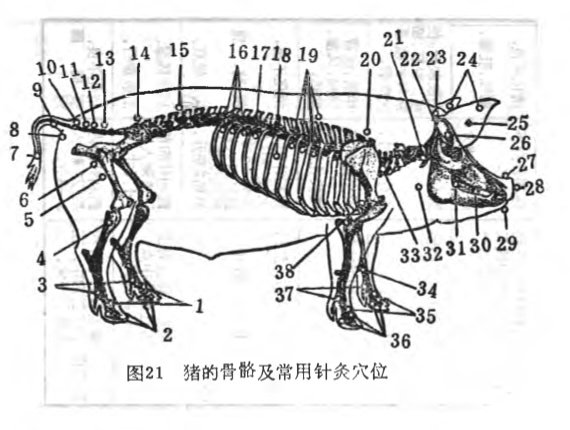
Raising agricultural productivity was not limited to crops, it was also an important agenda in animal husbandry. Facing veterinary diseases and pests throughout the country, the government considered the reduction of mortality especially of important animals such as horses, cows and pigs a vital issue. Mao Zedong declared in 1942, during his time in Yan’an, that ‘the greatest enemies of animal husbandry are too many diseases and too little fodder. Its development cannot be realized if these two problems are not solved’ (xumu de zuoda diren shi bingduo yu caoque, bujiejue zhe liangge wenti, fazhan shi bukeneng de 畜牧的最大敌人是病多与草缺,不解决这两个问题,发展是不可能的).4
During the 1950s and 1960s the state intervened by integrating Chinese veterinary medicine (that only recently became known as traditional Chinese veterinary medicine) into the discipline of modern veterinary medicine in the PRC. This included the valorization of native medical knowledge (most advanced in equine medicine) and its adaptation to other animals such as cows, chicken, and ducks. Locally available treatment methods with herbal medicine and acupuncture were collected and tested, before being disseminated on a nation-wide scale. This anatomic drawing of a pig was featured in several veterinary handbooks. It highlights the location of different acupuncture points [see ⧉source: Acupuncture points of a pig, including the image depicted to the right]. Popular among peasants were also recipes for treating animal pests such as the swine flu [see ⧉source: Treatment of swine flu].
Technological Progress in Mao Era China
In sum, the examples above show that although the Great Leap Forward viewed revolutionary zeal and mass campaigns as primary means to achieve economic progress, it nevertheless allowed for technological innovation in agricultural production. Rather, the pragmatism in choosing semi-mechanization and valorizing local knowledge illustrates that progress and economic development could be achieved in spite of the wide-spread lack of resources in China. This observation is not limited to agriculture, but can also be found in the field of industry where white steel (that is ceramics) replaced steel parts in machinery, and in medicine where acupuncture and herbal medicine were used as healing methods on a par with Western biomedicine, both in human and veterinary medicine.
Footnotes
Unknown, Using Local Methods to achieve half-mechanization (Yong tu banfa shixian ban jixiehua 用土办法实现半机械化) (Nanjing: Jiangsu renmin chubanshe, 1958), 7-9.
Anna Louise Strong, The rise of the people’s communes in China (New York: Marzani&Munsell, 1960), 41-42.
See here Mao Zedong’s most influential text On Practice (Shijianlun 实践论) published in 1937. Mao, Zedong 毛泽东, On Practice (Shijianlun 实践论), in Selected Works of Mao Tse-tung vol. 1 (1965), 295–309.
Mao Zedong 毛泽东 (1948) On Economic and Financial Questions (Jingji wenti yu caizheng wenti 经济问题与财政问题). Dongbei shuju, 41.
Sources
- ⧉ IMAGE
- 文 TEXT
- ▸ VIDEO
- ♪ AUDIO
- ⧉Image Agricultural Tools: 1962 'Spring Plowing' Poster
- ⧉Image Bricks: 'The Soviet Union Is Our Model' Poster
- ⧉Image Agricultural Tools: Soviet Combined Harvester Stalinez-4
- ⧉Image Agricultural Tools: Application Of Various Technologies For Plowing, Harrowing, Sowing And Harvesting
- ⧉Image Agricultural Tools: 1957 Collection Of Materials On Exhibited Agricultural Tools
- ⧉Image Agricultural Tools: Know-how Of Improving Farming Tools
- ⧉Image Agricultural Tools: Restoring The Reputation Of The Two-Wheeled Doubled-share Plough
- ⧉Image Agricultural Tools: Wheel-barrow With Ball-bearings
- ⧉Image Agricultural Tools: Wooden Railroad Tracks For Transportation
- ⧉Image Agricultural Tools: Wind-powered Waterwheel
- ⧉Image Agricultural Tools: Sowing Machines
- ⧉Image Agricultural Tools: Household Sun-heated Cooker
- ⧉Image Agricultural Tools: Bio-thermal Energy
- ⧉Image Agricultural Tools: Acupuncture Points Of A Pig
- ⧉Image Agricultural Tools: Treatment Of Swine Flu
Further Reading
Hsu, Robert C. 'Agricultural Mechanization in China: Policies, Problems, and Prospects'. Asian Survey vol. 19, no. 5 (1979): 436-449.
Kuo, Leslie Tse-chiu. The Technical Transformation of Agriculture in Communist China. New York: Praeger, 1972.
Matten, Marc Andre and Rui Kunze. Learning Science from the Masses—Knowledge Production in Maoist China (forthcoming).
Schmalzer, Sigrid. Red Revolution, Green Revolution: Scientific Farming in Socialist China. Chicago: Chicago University Press, 2016.
Sigurdson, Jon. Technology and Science in the People’s Republic of China – An Introduction. Oxford/New York: Pergamon Press, 1980.
Stavis, Benedict. The Politics of Agricultural Mechanization in China. Ithaca/NY and London: Cornell University Press, 1978.
Strong, Anna Louise. The Rise of the People’s Communes in China. New York: Marzani&Munsell, 1960.
Suttmeier, Richard P. Science, Technology and China's Drive for Modernization. Stanford, CA.: Hoover Institution Press, 1980.
Wei, Chunjuan Nancy and Darryl E. Brock (eds.), Mr. Science and Chairman Mao's Cultural Revolution: Science and Technology in Modern China. Lanham: Lexington Books, 2013.
Xu, Liangying and Fan Dainian. Science and Socialist Construction in China. Armonk, N.Y.: M.E. Sharpe, 1982.
